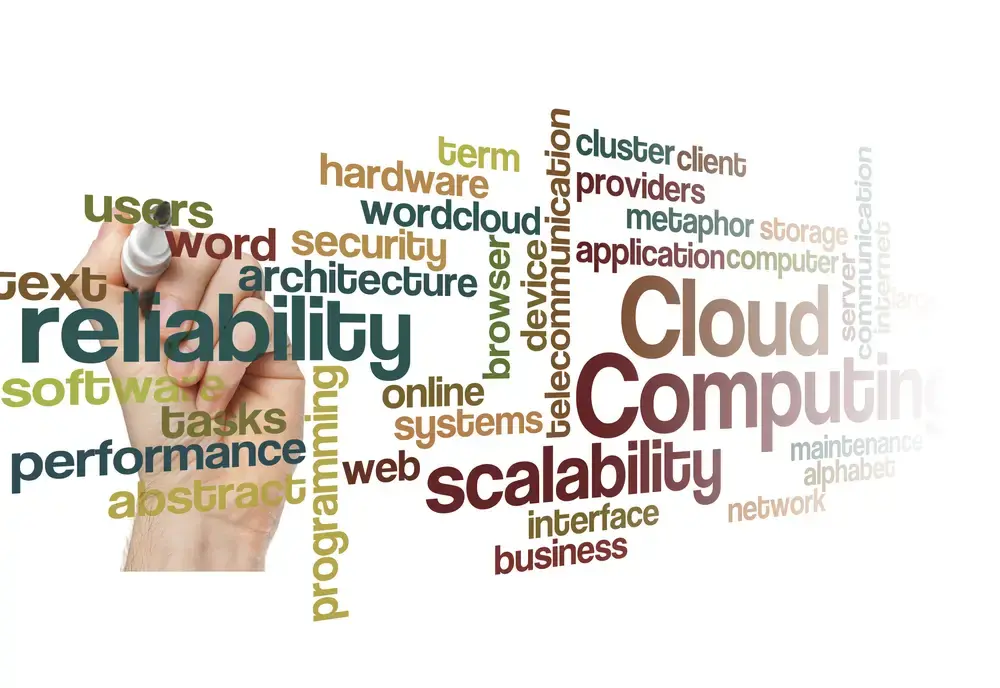Need for a Scalable LMS in Growing Companies
The Challenge of Growth
As a company grows, the number of employees and learners accessing the Learning Management System (LMS) also increases. Without a suitable infrastructure, this can lead to performance issues such as delayed loading times or system failures, which disrupt the training process and negatively impact the user experience. For companies aiming for global scalability, it is therefore essential to implement an LMS that is prepared for growing demands.
Scalable LMS in Growing Companies as a Solution
A scalable LMS dynamically adapts to the increasing number of users and the associated data volumes without compromising performance. For large companies, often operating globally with thousands of employees to train, this is particularly important. Lack of scalability leads to system overload, resulting in slow response times and potential outages, which can significantly hinder learning and, consequently, employee productivity and development.
Common Issues: Delays, Outages, and User Frustration Under High Load
An LMS not optimized for high user numbers typically exhibits the following issues:

- Long Loading Times: When many users access the system simultaneously, loading times increase drastically, leading to a poor user experience.
- System Outages: Overloaded systems can crash, resulting in a complete LMS outage. In such scenarios, users have no access to training materials, significantly impeding learning progress.
- User Frustration: Slow and unreliable systems lead to frustration, greatly reducing the acceptance and effectiveness of training programs.
Technological Foundations for Scalability
To effectively address these challenges, the technological foundation of the LMS must be carefully planned and implemented.
Architectural Approaches: Monolithic vs. Microservices Architectures
-
Monolithic Architecture: In a monolithic architecture, the entire LMS is built as a single, unified application. All functionalities are integrated into a single codebase. While this can be efficient for smaller systems, it becomes problematic as the number of users increases. Any change or scaling requires updating the entire application, leading to long development cycles and potential performance bottlenecks.
-
Microservices Architecture: In contrast, a microservices architecture consists of several small, independently operating services (microservices). Each of these services is responsible for a specific function of the LMS, such as user management, course management, or reporting. These services can be scaled and maintained independently, allowing for more flexible and efficient scaling. For instance, if the number of users increases significantly, the user management service can be scaled separately without affecting the rest of the system.
Cloud Computing and the Role of Load Balancing
-
Cloud Computing: By leveraging cloud computing, companies can dynamically adjust their LMS infrastructure. Cloud platforms offer the ability to provide additional server capacity in real-time as demand increases. This ensures that your LMS remains stable and free of performance issues even during sudden spikes in load.
-
Load Balancing: Load balancing is a technique where incoming user requests are evenly distributed across multiple servers. This prevents individual servers from becoming overloaded, improving the overall performance of the LMS. Load balancers continuously monitor load distribution and automatically route traffic to the server with the least load. This is especially crucial when many users access the LMS simultaneously.
Data Management and Performance Tuning
Effective data management and performance tuning are critical to keeping an LMS stable and fast as the number of users grows.
Optimization of Database Queries for Large User Numbers
Databases are the core of any LMS, storing all user data, course information, and learning progress. As the number of users increases, so does the volume of database queries, which can lead to performance issues. To prevent this, database queries must be optimized. This involves writing and structuring SQL queries for maximum efficiency. Techniques such as indexing frequently queried data, caching results, and optimizing database schemas contribute to improving performance.

Strategies for Minimizing Latency & Loading Times
-
Latency: Latency refers to the delay between a user’s request and the system’s response. High latency can significantly degrade the learning experience. To minimize latency, companies can use Content Delivery Networks (CDNs) that deliver content from servers geographically closer to the user. Additionally, optimizing network routes and using asynchronous content loading ensures that user interactions are quick and seamless.
-
Loading Times: Besides latency, loading times—how long the LMS takes to load content—are also crucial. Compressing files, minimizing HTTP requests, and leveraging browser caching can significantly reduce loading times.
Load Testing and Continuous Optimization
Continuous monitoring and optimization of the LMS are essential to ensure the system remains stable as demands increase.
Implementation of Stress Tests for Performance Monitoring
Stress tests simulate extreme conditions, such as those that occur during peak times. They test how the LMS responds when, for example, a large number of users access the system simultaneously. These tests help identify and address weaknesses in the system architecture before they become real problems. This way, companies can ensure that their LMS operates reliably even under heavy load.
Planning for Scalability: How an LMS Grows with the Company
Scalability should be planned as a long-term strategy. This means designing the LMS from the outset to scale smoothly with the company. This involves regularly assessing the current infrastructure, forecasting future demands, and expanding resources in a timely manner. New technologies, such as machine learning for optimizing system processes, can also be integrated into the planning.

Steps to Plan for Scalability:
-
Conduct a Detailed Needs Assessment: Begin by conducting a comprehensive analysis of your organization’s current and projected user base, training needs, and technological environment. This includes understanding peak usage times, the complexity of content being delivered, and potential future expansions, such as opening new offices or launching new training programs.
-
Modular Design and Microservices Architecture: Implement a modular design from the beginning. By using a microservices architecture, you ensure that different components of the LMS, such as course management, user authentication, and analytics, can be independently scaled. This approach allows for targeted resource allocation and avoids the pitfalls of monolithic systems, where a bottleneck in one area can affect the entire system.
-
Cloud-Based Infrastructure and Auto-Scaling: Leverage cloud-based infrastructure that supports auto-scaling. Cloud providers like AWS, Azure, or Google Cloud offer services that automatically allocate resources based on real-time demand. By configuring your LMS to use these services, you ensure that the system can handle unexpected spikes in user activity without manual intervention.
-
Continuous Performance Monitoring and Load Testing: Implement continuous performance monitoring tools to track system health, user activity, and resource usage. Regularly conduct load testing to simulate peak loads and identify potential bottlenecks. Tools like Apache JMeter or LoadRunner can be used to automate these tests, providing data that can inform future scaling decisions.
-
Implement a Data Management Strategy: As your LMS scales, the amount of data generated by users will increase exponentially. Plan for this by implementing a robust data management strategy that includes regular data archiving, efficient indexing, and the use of distributed databases that can grow with your data needs. This ensures that as the user base grows, data retrieval remains fast and efficient.
-
Plan for Disaster Recovery and Redundancy: Scalability is not just about handling growth; it’s also about ensuring stability and resilience. Implement disaster recovery plans and redundancy measures, such as backup servers and failover systems, to ensure that your LMS remains operational even in the event of a server failure or data center outage.
-
User Experience and Interface Scalability: Consider how the user interface will need to scale as well. A growing number of users with diverse roles may require more personalized dashboards or interfaces. Plan for UI/UX scalability by adopting design principles that allow for easy customization and the addition of new features without overcomplicating the user experience.
By taking these proactive steps, you ensure that your Learning Management System not only grows with your company but does so in a way that is efficient, reliable, and aligned with your long-term strategic goals. This strategic approach to scalability ensures that your LMS can support your organization's growth without compromising performance or user satisfaction.
Case Study: Successful Scaling in an International Corporation
A leading global automotive manufacturer faced the challenge of scaling its LMS for over 150,000 employees worldwide. The existing monolithic system could no longer meet the growing demands. Loading times of several seconds and frequent system crashes led to significant frustration among employees, especially during the rollout of new vehicle models, which required intensive training.
The company decided to transition its LMS to a microservices architecture and migrate to the cloud. This allowed individual components of the system, such as course management and user management, to be scaled independently. In addition, a load balancing system was implemented to ensure that the load was evenly distributed across the available servers.
By optimizing database queries and using CDNs, average loading times were reduced by 70%. Stress tests were conducted regularly to ensure that the system remained stable even during peak times, such as during global product launches.
The result was a significantly improved learning experience for employees. The faster loading times and increased system stability led to higher acceptance and a more efficient learning process. The company was able to ensure that all employees worldwide were trained effectively and on time, contributing significantly to the successful launch of new products.

About us
Since 1998 SoftDeCC is working closely with major training centers and academies. This results in a unique experience with training requirements.
Our Learning Management System is designed to adjust to individual corporate learning processes and address evolving challenges. More...

Contact us for more Information
We'd be happy to share our experience with you.
Schedule your free consultation now at +49 (0)89-3090 839 30.
.webp)




